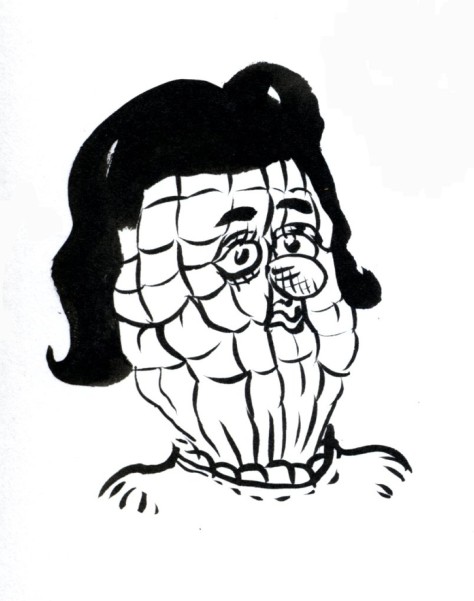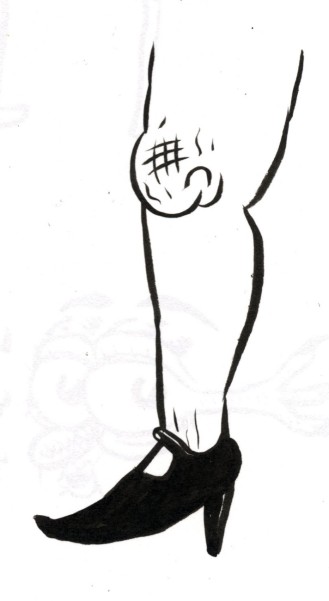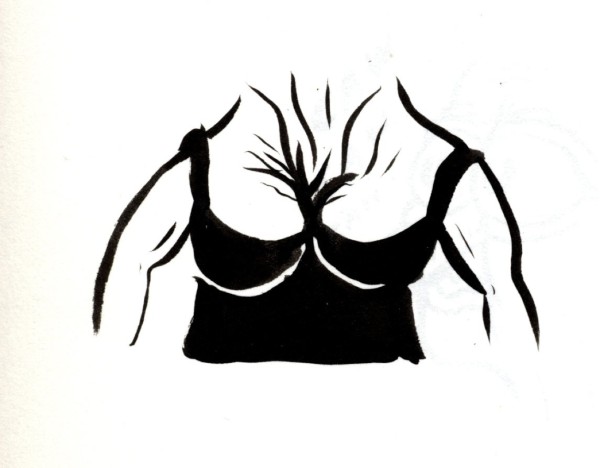Lisa recently asked, “What warrants a slide show on a newspaper’s website?” Denise L. sent in an article from the Life section of the Globe and Mail website called “Obsession with Aging Female Parts Has Created a New Body Lexicon” that brings up similar questions about what topics are given attention. The article states,
Ladies of a certain age, the best that can be said is, welcome. Congratulations are not necessarily in order…
Such is women’s obsession with the tyranny of their aging bodies – some might even call it a body dysmorphic disorder – that they develop names for the various age-signifying bits that can seem as offensive as teenage behaviour, prompting a need for strict control (in this case intervention in the form of diet, exercise, cream, injection or scalpel).
The names suggest annoyance, never love or fondness of the type men have for some of their parts.
Which is unfortunate. Don’t you love your teenager, despite his long, greasy hair? The cure, ladies, is to laugh. To wit, a list of the best names for the worst afflictions.
We then have images to illustrate aging and the names giving to aging body parts. Here are a few. Vampire Dinner Lips:

Quilting Pattern:

Suitcase Knees (because they’re “padded and bulky”):

Crepey Cleavage (presumably looks like a crepe?)

Crow’s Feet:

Huh. I wonder why women don’t see to express “love or fondness” for their aging bodies the way the article claims many men do (something I find doubtful).
The article presents itself as an antidote to women’s obsession with their bodies and aging, a way to help women laugh and accept their bodies. But the images that accompany it, clearly meant to make the figures into objects of ridicule, make it hard to imagine how they would achieve such an objective. Reading it just made me aware of all kinds of things I’d never heard of or particularly noticed before. And in a larger sense, the question, as with the slide shows of scantily clad women, is why this is news? And why pretend the article is about helping women accept their bodies through humor, which I don’t think it does?

Comments 13
Deaf Brown Trash — August 1, 2009
and yet no mention of aging men's bodies, either. WTF.
anonymous — August 1, 2009
Slideshows are easy money for Web-based publications: they're popular with readers (breezy and quick to read) and they're spread out over more pages = more pageviews = more ad impressions. I'm posting this anonymously because I was just told that one of the places I write for wants fewer in-depth articles and more slideshows. It makes sense economically on my part as well -- slideshows take less effort than actual articles -- but I'm a little bummed about it, as they're more or less substanceless.
Anyway, my point in terms of the issues raised in this post is that a lot of pubs are putting pressure on their writers and editors to churn out slideshows, so who knows what sort of crap you're going to get.
Claire F. — August 1, 2009
The problem with the media's "we want to help women accept and love their aging bodies" line of thinking, is that if they stopped running stories about cankles and ran fewer advertisements for eye cream (for those crow's feet!) maybe women wouldn't hate their bodies so much in the first place.
Elena — August 1, 2009
"The cure, ladies, is to laugh."
Patronising much?
Gexx — August 1, 2009
I think the crepey cleavage is a reference to the fabric called crepe, which me made stylishly wrinkled.
I haven't heard of any of these other than crows feet, which I've always called laugh lines.
Gexx — August 1, 2009
which me made = which *can be* made
Kelly — August 1, 2009
As an illustration student, these pictures give me something to ruminate on...... I would never want to offend anyone with my drawings, but sometimes it's difficult given what's wanted by the art director, publication, etc. I think the person who drew these was having fun with them and dashed them off rather quickly in a somewhat thoughtless manner. It really shows in their work.
Bitch Wrinkles, Bingo Wings, And Vampire Dinner Lips: Are Women Really Celebrating The "New Body Lexicon?" [Age Rage] by Funny Celebrity . info — August 2, 2009
[...] Gwen at Sociological Images writes, “The article presents itself as an antidote to women’s obsession with their [...]
Eneya — August 2, 2009
How can anybody can learn to love himself, when they portraied the same things that all commercials try to "cure"?
I do not understand. Reverse psycology may be or just another planned humiliation.
May be to learn to love ourselves they just need to stop learning us to hate ourselves with all those absurd standarts.
Because nobody is born with selfhatred but is taught.
Sue — August 3, 2009
Claire F:
They want women to hate their bodies; the eye cream doesn't sell itself.
Men still are largely exempt.
For similar reasons, I disliked the Dove "Real Women" campaign. If it's OK to have some flesh, why is cellulite cream being sold?
08.03:top.10.reads « must be spoken, made verbal, and shared. — August 3, 2009
[...] Sociological Images » “Body Lexicon” for Aging Female Bodies. [...]
Seabird — August 24, 2009
This stuff shows up all the time, but not so blatantly. Whenever they point out how smoking prematurely ages "people," or how sunlight prematurely ages "people," the "people" they show in photos are always women. I even found it in a text book for a speech class a few years ago. Somehow, in the pages of a speech text, there was a photo of twin women in their forties, one of whom had smoked in her life and the other who had not. The differences in their faces, in my opinion, had little to do with smoking and everything to do with who had had the more fortunate life, had endured less heartache, etc.
It's always something. When I was in my twenties and early thirties, my boyfriends always complained that I was too fat. Now that I'm approaching fifty, and have the same body type I've always had, I hear that I am too thin, which I think means too flat, but I never ask them to specify. They build their egos by tearing down ours. It's a fact of life, and I don't think it will ever change.
When “Normal” Is Not Good Enough » Sociological Images — January 17, 2010
[...] telling us that our bodies are abnormal and by telling us that they are normal. Normal bodies are icky, we’re told, your body should appear, as much as possible, as if it is not a body at all. I [...]